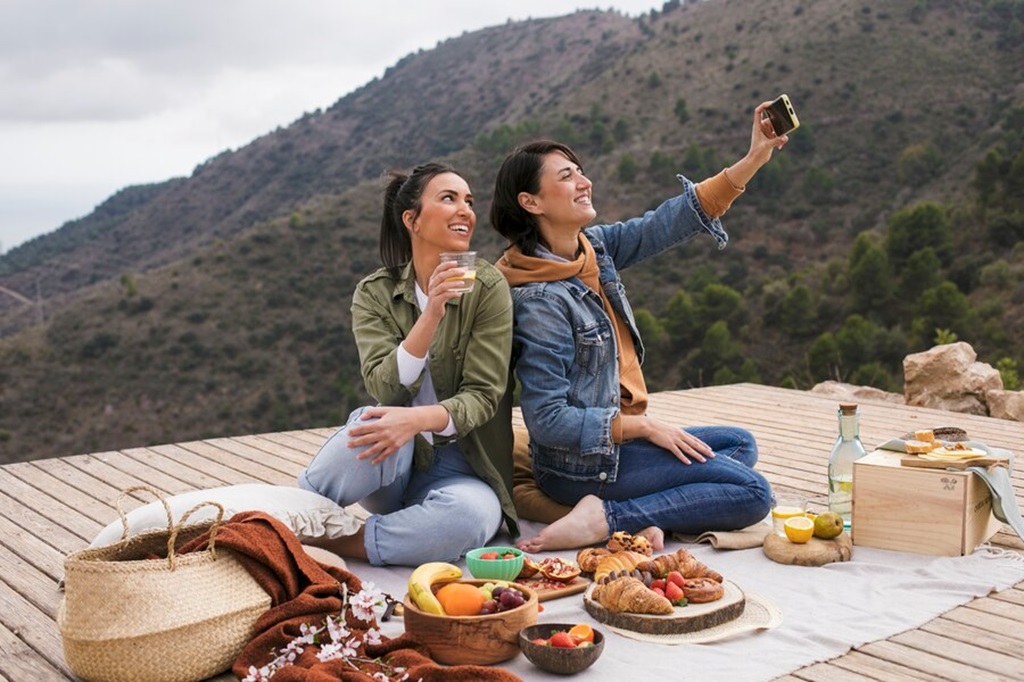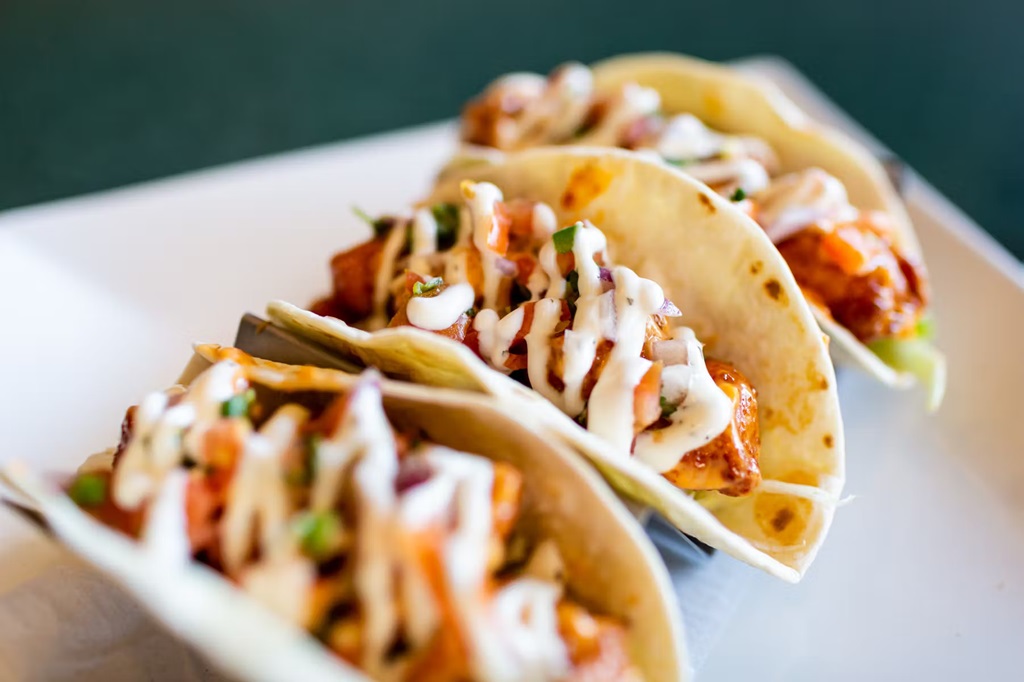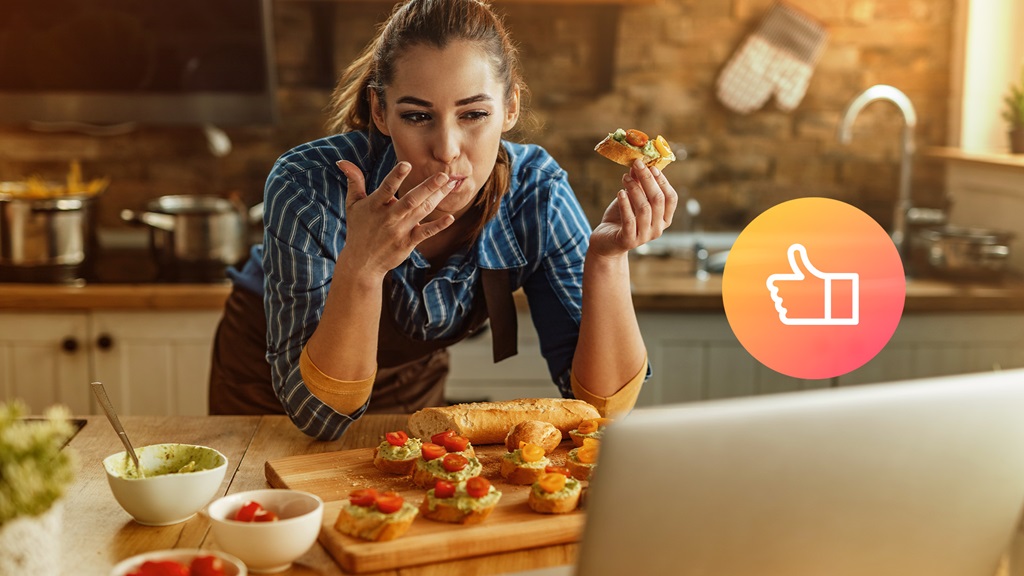
18 Dec How Foodie Adventures Help Shape the Cuisine World
As someone who is passionate about cooking or simply enjoys food, have you ever wondered what inspires chefs to come up with new innovative dishes and bold flavor combinations that leave us craving for more? It’s often the result of foodie adventures who embark on culinary journeys around the world, immersing themselves in different cultures and experimenting with local ingredients to create unique and exciting dishes. These explorations can lead to groundbreaking trends in the world of cuisine, influencing chefs and home cooks alike to expand their horizons and explore new flavors and techniques.
Defining a “Foodie” Lifestyle
But what exactly constitutes a foodie these days? Sure, we all love to eat. However, those who identify as foodies take it a step further. For self-proclaimed foodies, the quest to discover bold new culinary experiences isn’t just a hobby – it’s a lifestyle.
You can spot a foodie by their appetite for unique ingredients and eagerness to step outside their comfort zone. While the average person might balk at the idea of noshing on fried tarantulas or guinea pig, foodies excitedly seek out such exotic local specialties when traveling. Expanding their palates and bouncing from eateries off the beaten tourist path brings them joy.
Beyond chasing unusual eats, dedicating vacation time and income towards dining adventures is core to the foodie identity. From splurging on Michelin-starred restaurants to embarking on food tours in foreign districts, foodies structure travel around flavors. Capturing glam shots of meals to inspire social media envy is part and parcel of the experience too.
How Does a Foodie Adventure Influence Cuisine Culture?
While the foodie lifestyle may seem fringe, it wields surprising influence over mainstream food movements. Once trailblazing foodies uncover obscure ingredients or cooking techniques in remote corners of the world, these exotic elements eventually trickle through the industry pipeline. In time, former oddities land in grocery aisles and on restaurant menus as foodie darlings push the boundaries of what societies consider acceptable fare.
The ripple effect doesn’t end there. As foreign cooking methods that foodies praise percolate, more chefs experiment by incorporating aspects into their own interpretations. Next thing you know, everyone is whipping up some stylized version of a dish that a curious foodie stumbled upon in their quest for adventure a year or two prior.
Celebrity Chef Personalities as Trendsetters
Besides everyday foodies scouting FRESH ideas during their escapades, famous chefs also steer food tendencies. In particular, chef-focused travel TV programming has soared in popularity over the last decade. Series following big culinary personalities as they roam the gastronomic globe clearly inspire viewers.
What is it about famous chefs’ adventures that captivate attention? Audiences live vicariously through hosts like Anthony Bourdain or Andrew Zimmern as cameras trail them sampling strange street foods and bantering with vendors in languages foreign to our ears. The awe these stars exhibit whilst discovering age-old cooking traditions or rare ingredients gets us hooked. Humanizing prestigious chefs by showcasing their genuine wonder, joy, and hospitality towards humble cooks has an effect too.
When celebrity chefs return from expeditions abroad, eagerly integrate beloved techniques, recipes, and exotic elements into restaurant menus. Fans take note and seek to mimic dishes at home as well, fueling demand for newfangled ingredients at grocers. Soon waves of mainstream home cooks try their hand at recreating dishes they watched TV chefs go ga-ga over in far-flung corners of the earth.
Andrew Zimmern’s Strange Foods Spotlight

Andrew Zimmern has carved an esteemed television career from globetrotting in search of bizarre nibbles. As the witty host of Travel Channel’s Bizarre Foods which premiered back in 2006, Zimmern traipses around the planet sampling outlandish edibles that make average viewers squirm. With an iron-clad stomach and open mind, he fearlessly devours fish bladders, lamb testicles, and even spiders with locals.
Beyond flashing his adventures consuming odd animal parts to the disgust or delight of fans, Zimmern does crucial work. By shining a spotlight on niche food customs across diverse cultures, he continually expands awareness of what the global culinary landscape has to offer. When Zimmern enthusiastically eats mopane worms and other oddities on camera while emphasizing their nutritional value, it slowly deprograms our conditioned aversion.
Thanks to far-reaching platforms like Bizarre Foods, niche ingredients and preparations once unknown beyond remote villages now garner intrigue worldwide. Zimmern notes this educational aspect drives him too – a desire for cultural exchange through cuisine. Over time, his elevation of strange delicacies chips away at perceptions until things formerly deemed revolting become normalized. What starts as shock factor content ultimately opens minds and markets.
When Foodies Take to Social Media
Of course, foodies no longer need television deals to broadcast their epicurean adventures and shape food spheres. In today’s digital era, every wanderlust-driven food enthusiast can build followings through blogs and social media shares. By documenting odd edibles or teasing indigenous cooking secrets discovered abroad, ordinary folks now wield influence too.
Vivid photos and descriptions of genuine delight over bizarre barbecue techniques, faded family recipes, or rare produce foraged in remote regions spark curiosity. When adventurous eaters highlight origin stories and culinary significance rather than just gagging for laughs, respect builds for underappreciated food cultures. Enough viral attention through retweets or reproduction of recipes can activate accrued demand that catches companies’ eyes.
Suddenly, that smelly fruit with a notorious nickname a niche food blogger who trekked through Southeast Asia raved about appears bottled into sodas on grocery store shelves. Regional chili pastes only found in certain villages become manufactured into mass-marketed hot sauces to meet hungry Westerners wants. Trend-spotting companies race to bank on converted foodies spreading the gospel of their obscure finds.
The Viral Balut Story
When YouTuber personalities Mikey Chen and David Hoffman shared their polar opposite reactions to eating balut – a developing duck embryo eaten in the shell that is a cultural delicacy in parts of Asia – it took the internet by storm. While Hoffman spit the egg out in revulsion, Chen delightedly slurped the broth and fetus down. Beyond reviews of the odd snack itself, deeper exchanges in the comments about cultural sensitivity struck a chord across global digital communities.
By approaching balut with an educational lens, Chen brought dignity to this niche foodway rather than just exploiting its shock value for cheap views as some food vloggers have. He explained customs around proper preparation and consumption while positively highlighting balut’s nutritional qualities. Despite Hoffman’s funny reaction, he also showed graciousness by trying something well outside his comfort zone on camera.
Their viral balut video demonstrates foodies power to expand the consciousness of marginalized food cultures through courageous yet respectful approaches. Chen’s calm analysis of its benefits countered the dominant messaging of “ew, gross!” that often surrounds unfamiliar fare. Comments revealed shifting attitudes as viewers gained appreciation for balut through this lens even if they wouldn’t eat it themselves.
Three years later, balut has broken totally mainstream with appearances everywhere from Pitchfork music reviews to Netflix’s breakout sitcom Emily in Paris. As more digital foodies follow Chen’s footsteps by uplifting food marginalization, perhaps public perceptions around adventurous eating will continue improving. The cuisine world undoubtedly expands its imagination thanks to foodies celebrating the weird and wonderful.
Foodie Tour Operations Feed Wanderlust Appetites

Real-life foodies need more than bait from Instagram posts or travel TV programming to take culinary quests themselves, right? Enter food tour companies that design easily digestible guided adventures enable anyone to sample local delicacies in foreign cities.
As tourism rebounded post-pandemic with a vengeance, food and beverage tours became best-sellers. Mainstream sightseeing itineraries just weren’t cutting it for travelers seeking deeper connections through cuisine discovery after extended shutdowns. With return customers making up nearly 40% of food tour sales, these adventures clearly captivate foodies.
What drives the attendance boom?
Beyond mere hunger, food tours promise convenient local immersion by navigating guests straight to authentic eateries. They reveal insider hideaways even many residents overlook, with passionate guides adding context around dishes and the neighborhoods serving them up. All the rewards of spontaneous exploration without the hassle of planning it yourself!
From night markets sizzling with wok-fresh street snacks in Taipei to clandestine dining clubs plating illegal cheese and wine pairings in Havana, barrier-breaking food tour operators enable almost anyone to retrace Anthony Bourdain’s footsteps. By handling logistics like language barriers, reservations, and transport between myriad stops, operators let foodies and culinary novices alike focus on adventurous eating.
Yet these curated hospitality experiences do far more than serve up brag-worthy Instagram moments. Thoughtfully hosted excursions that sprinkle in historical insights alongside tastings advance respect for regional traditions that tourists might otherwise misinterpret or dismiss. With minds expanded alongside stomachs, food tour patrons return home as enlightened advocates for entire undervalued cuisines.
In turn, spotlighting businesses preserving cultural foodways despite modernization or outside disrespect empowers their longevity too. As word spreads digitally of humble family-run operations and die-hard holes-in-the-wall tour companies feature, former locals-only joints draw crowds from across continents. While booming success threatens some eateries’ intimacy and traditional processes, most rhythmically dance between supporting loyal neighborhood regulars and engaging curious visitors.
Anthony Bourdain’s Lasting Legacy
The late Anthony Bourdain leaves towering shoes no food TV host can likely ever fill thanks to his fierce intellect and bold heart. Throughout his series starting from breakout A Cook’s Tour in the early 2000s to Parts Unknown, Bourdain fearlessly traipsed into simmering conflict zones and other sensitive areas often glossed over. His sharp observations interwoven with loving spotlights on everyday cooks kept fans hooked.
Beyond ratings, Bourdain’s risk-embracing travels brought human stories from shadowed regions to mainstream awareness for perhaps the first time. By reminding audiences of our shared humanity through meals, he pushed global consciousness further. Even today, locals proudly discuss their cameos in Parts Unknown episodes years later for the interest it continues drawing.
From Gaza to Iran to Appalachia, Bourdain introduced the unfamiliar, rewrote false narratives, and connected people psychologically through food and conversation. While always entertaining, his work impacted attitudes and policies. After highlighting controversial regional delicacies, they would appear on New York menus soon after almost as an homage. Even years following his death, Bourdain’s bold legacy lingers as a reminder of cuisines’ power to open minds and bring us together across all divides.
When Foodies Get Political
Beyond transforming menus and travel itineraries, foodies adventures influence actual political histories too, as incredible as that sounds. By discovering near-lost ingredients or cooking customs in endangered regions and then celebrating them globally, foodies actually sway public opinion on political conflicts. Several prominent examples of cuisine activism rousing change exist over recent decades.
Take the quinoa revolution, for instance. Once a nutritious ancient grain central to Bolivian cuisine yet largely unknown abroad, quinoa today bursts out of every health-conscious pantry thanks entirely to foodies. As visiting food writers, chefs, and regular traveling eaters encountered the tasty gluten-free grain in the 90s and 00s, word quickly spread. Health-haloed quinoa landed in US grocery stores and fast casual salads. An exceptional complete plant protein, quinoa fit foodie cravings for then fringe superfoods perfectly.
Demand surged so dramatically that by 2013, quinoa prices tripled beyond what average Bolivians could afford. Experts grew concerned commercial pressures would erode traditional processes and varieties. While the grain’s popularity aided Bolivian farmer incomes initially, most profits flowed outwards to mass quinoa production in Peru and Europe. Politicians feared cultural erosion.
Yet the quinoa issue transformed from concern into opportunity thanks to the media. As journalists illuminated the complex challenges of Bolivia’s export pressures, consumer awareness expanded. Influential foodies like Mark Bittman furthered discussions of fair-trade practices around quinoa production. Gradually, brands committed to sustainable, ethical sourcing from small Bolivian farms prevailed. Foodie’s zeal for superfoods actually strengthened low-income Bolivian communities, protecting invaluable cultural heritage.
Saveur Magazine Sparks Change
While countless food-loving wanderers have supported political change, Saveur magazine’s editorial direction under James Oseland (2000-2006) proves especially influential. By steering the focus toward endangered cuisines of imperiled regions like Afghanistan, Oseland gave global foodies insight into how political conflicts threaten foodways. His bold move to feature regional home cooks as cover models over celebrities sparked reader’s dreams of courageous culinary quests.
Saveur sent daring writers to high-risk areas other outlets ignored, unveiling rich undersung food cultures trapped geopolitically like Iran, Cuba, and Myanmar. Through exploring cuisine ties, they illuminated the very real humanity behind conflicts. Oseland credits Midwestern housewives yearning to support these communities through food tourism and exchanges for propelling political shifts over his tenure. Simply celebrating undervalued cultures has power.
While Oseland moved on from Saveur long ago, his gutsy editorial legacy holds strong as new regimes permit to travel to once blocked-off regions. As more everyday foodies retrace the magazine’s early footsteps today with smartphones in hand, they transform food fate.
Foodie Influence on Hospitality Industry Expansion

Of course, none of these foodie-fueled ripples through the culinary scene would occur without hospitality establishments to meet demand once the seed gets planted. As wandering foodies stumble upon fringe food groups, cooking methods, or custom pairings that enchant their palates abroad, related hospitality sectors balloon domestically soon after.
For instance, foodies’ intense adoration of fiery street snacks and blistering hot pot on recent Bangkok junkets has many North American restaurant franchises racing to deliver equal adrenaline rushes. Dedicated chili bars mixing bespoke blistering blends to slather atop shareable snacks didn’t exist stateside hardly a decade ago. Yet pointing to Thailand’s bustling culture, demanding fans cry for access outside specialized Asian suburbs.
As enough bold foodies dub certain districts the best handmade noodle crawl or top late-night meat skewer action globally on blogs and Insta shares, hospitality takes notes. Specialized tours and cooking classes bubble up to feed the thrill-seeking appetites of subsequent visitors. When fans request recipes for beloved exotic dishes encountered at hole-in-the-wall shops overseas, sometimes entire franchises launch catering to their fervor.
One hip foodie adventure eyebrow-raising discovery opens the gateway allowing entire regional cuisines to permeate new communities. An eccentric flavor combination first scoffed at until daring influencers embrace it soon enough lands bottled on every store shelf. Foodies have the scene’s ear and they are hungry for more.
Key Takeaways
- Foodies act as trendsetters by seeking out bold new ingredients, cooking methods, and exotic dish ideas while traveling internationally off the beaten path. Their adventurous eating habits eventually influence mainstream cuisine.
- Through TV programming, social media shares, blogs, and food tourism companies, foodies spotlight hidden food cultures, champion marginalized cuisine groups, and expand access to experience previously niche fare for themselves.
- By highlighting little-known food communities with dignity and showing genuine enthusiasm over traditionally frowned upon delicacies, foodie attention helps combat aversion and stereotypes. Ingredients once unknown or dismissed become normalized over time thanks to foodies softly countering dominant messaging through courageous eating.
- On occasion, the viral spotlight foodies shine through adventures actively aids the welfare of endangered food communities or advances political change by awakening public awareness of related issues. Quinoa’s rise and the knock-on effects serve as one example of cuisine activism success thanks to foodies.
- As pioneering foodies return from exotic escapades abroad enchanted by specific regional fare, they fuel hospitality industry expansion domestically to meet their enduring cravings once back home. Niche cooking methods and custom food pairings flood menus and store shelves soon after foodies spotlight them.
FAQs
How much impact can an individual foodie really have over cuisine?
While a single foodie alone may not wield immense influence, the combined virtual megaphone of adventurous eaters thanks to blogs/social media shares has proven extremely powerful lately. Trend analysts watch platforms like TikTok closely now for rising foodie darlings. As enough vocal fans spotlight specific dishes, enough momentum builds to sway whole industries.
What makes a foodie different from someone who merely enjoys good food?
While all types appreciate tasty eats, true foodies structure significant time and income around food adventures such as fine dining experiences, and boutique food tours while traveling and splurging on rare ingredients. Expanding their palates motivates higher risk appetite to try unique fare. Part identity, foodies view adventurousness around eats as reflecting one’s worldliness.
How can local tourism economies thrive off visiting foodies without compromising traditions?
Smart destination management through government and hospitality groups enables communities to engage tourism on their own terms if done thoughtfully – setting growth limits preserving character, designating certain sites with low impact, and funneling tourist activity to less vulnerable zones. Visitor interest allows capital for reviving heirloom ingredients/cooking forms.
Could spotlighting “bizarre” delicacies through the shock factor also belittle native cultures?
Absolutely, the way niche food cultures get framed matters immensely. While curiosity about rare ingredients isn’t inherently bad, fixating on “weirdness” otherizes traditions. But sharing origin stories, explaining the culinary purpose, and highlighting health properties builds connections through food rather than just gawking at differences.
How will the foodie identity and relationship to the cuisine world continue evolving in the future?
As global connectivity expands, the notion of “bizarre” narrow – signs already shows formerly odd items like seaweed proliferating thanks to intrepid foodies. With sustainability concerns mounting, expect ethically sourced, ecologically sensitive exotic eats to define next-gen food.

Sorry, the comment form is closed at this time.